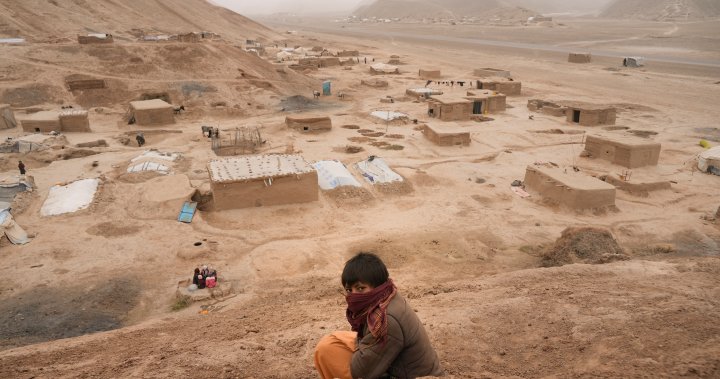
Afghanistan’s climate change exacerbating poverty as humanitarian crisis looms
Global News
Experts predict climate change will make droughts even more frequent and severe in Afghanistan, and they have been ringing the alarm bell for years.
Fed by rain and snowmelt from mountains, this valley nestled among northwestern Afghanistan’s jagged peaks was once fertile. But the climate has changed in the last few decades, locals say, leaving the earth barren and its people struggling to survive.
Many have fled, heading to neighboring Iran or living in abject poverty in camps for the displaced within Afghanistan as repeated droughts parch the land and shrivel pastures.
“I remember from my childhood … there was a lot of snow in the winters, in spring we had a lot of rain,” said 53-year-old Abdul Ghani, a local community leader in the village of Sang-e-Atash, in the hard-struck province of Badghis.
“But since a few years ago there has been drought, there is no snow, there is much less rain. It is not even possible to get one bowl of water from drainpipes to use,” he said, as he observed the Red Crescent Society handing out emergency winter food supplies to farmers whose crops have completely failed.
The severe drought, now in its second year, has dramatically worsened the already desperate situation in the country. Battered by four decades of war, Afghans have also had to contend with the coronavirus pandemic and an economy in freefall following the freezing of international funding after the Taliban seized power in mid-August amid a chaotic withdrawal of U.S. and NATO troops. Millions can’t feed themselves, and aid groups warn of rising malnutrition and a humanitarian catastrophe.
For many families in the Sang-e-Atash area, the Red Crescent aid is their only lifeline for the harsh winter. The organization’s regional head for western Afghanistan, Mustafa Nabikhil, said 558 families had received the food over three days: flour, rice, beans, cooking oil, sugar, salt, tea and high-calorie, vitamin-fortified biscuits.
Badghis’s farmers are particularly vulnerable as the region lacks an irrigation system, leaving them dependent on the weather, Nabikhil said.
If it rains, they will eat. If it doesn’t, they won’t. Their desperation is palpable.











